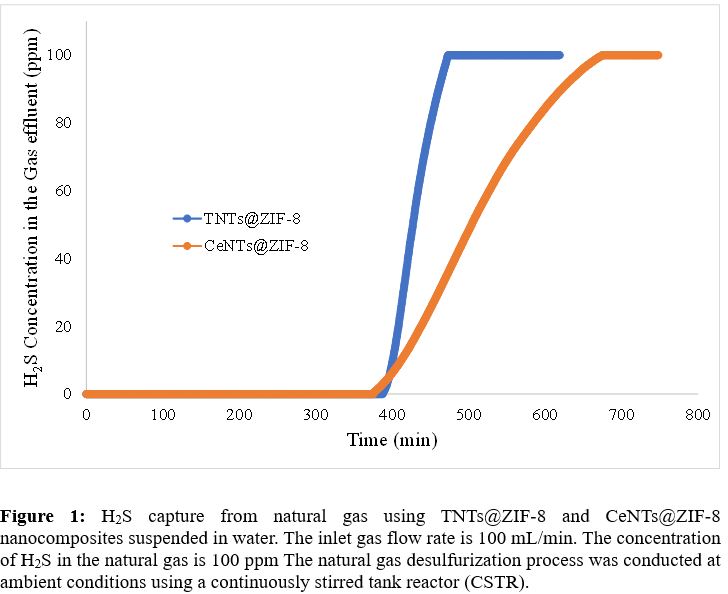Natural gas, a critical energy source, is consumed globally at a rapid rate, with a projected 220 trillion cubic feet (tcf) to be used by 2050 compared to 130 tcf in 2020. A challenge arises from hydrogen sulfide (H2S), a toxic gas present in sour natural gas reserves. H2S is both hazardous due to its toxicity and corrosiveness and explosive when mixed with air. Human exposure to H2S can lead to serious health issues, even at low concentrations. Additionally, it degrades equipment by causing hydrogen embrittlement and corrosion.
Amine absorption is the current method used for H2S removal, but it is energy intensive and corrosive. Therefore, alternative technologies are being explored, with zeolitic imidazolate frameworks (ZIFs) emerging as promising materials. ZIFs, which belong to the category of metal organic frameworks (MOFs), composed of zinc (Zn2+) or cobalt (Co2+) linked with imidazole ligands, are characterized by thermal stability, high surface area, and adaptability. Among them, ZIF-8 stands out for its ease of fabrication and high production yield, although it suffers from water instability. Recent studies suggest that modifying ZIFs can enhance their stability in water. This study presents the novel synthesis of TNTs/ZIF-8 (titania nanotubes) and CeNTs/ZIF-8 (ceria nanotubes) nanocomposites, which has not been previously reported in the literature to the best of our knowledge, highlighting the novelty of this study.
The TNTs@ZIF-8 nanocomposite was synthesized through a hydrothermal method, involving the dispersion of titania nanotubes in a zinc solution followed by the addition of 2-methyl imidazole. The CeNTs@ZIF-8 nanocomposite was prepared similarly with cerium nitrate and characterized through BET, XRD, FTIR, and SEM, confirming successful synthesis.
The performance of these nanocomposites in H2S capture was evaluated in a continuously stirred tank reactor (CSTR). Both materials were suspended (separately) in water while sour natural gas was bubbled through the suspension. The results showed that TNTs@ZIF-8 could completely eliminate H2S for up to 390 minutes (i.e., the breakthrough time) before reaching saturation at 475 minutes. CeNTs@ZIF-8 demonstrated breakthrough at 376 minutes and saturation at 675 minutes. These findings, illustrated in Figure 1, highlight the efficiency of these nanocomposites in desulfurization, making them promising for industrial applications.
This study provides a basis for organic-free, mild processes using submerged nanocomposites in CSTR systems, presenting a scalable and efficient alternative for natural gas desulfurization. However, further studies are required to explore the scalability and economic viability of these processes.

